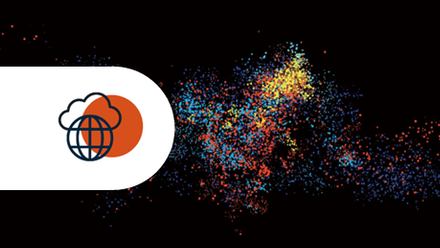Ofcom publishes review of Future of TV Distribution in the UK
As news came this week of Disney and Warner Bros harking back to a pre-internet era offering of "bundling" their services together, so UK regulator Ofcom publishes its findings as it examined the future of TV distribution.
The report seeks to explore the effects of a rapidly evolving media landscape, and comes in response to a request from the Department for Culture, Media and Sport (DCMS) in 2022 to review market changes affecting content delivery via Digital Terrestrial Television (DTT).
The findings shed light on some significant shifts in consumer behavior and advances in tech that have reshaped the way people consume television content. With an increasing number of viewers turning to online platforms (fuelled by the availability of full fibre broadband services, and diverse viewing devices) traditional broadcast TV, particularly over DTT, has experienced a decline in viewership. The average daily minutes spent watching broadcast TV dropped by 25% between 2018 and 2023, which is a notable shift.
Ofcom notes in its findings that projected viewership of scheduled TV would decrease from 67% of total long-form TV viewing in 2022 to an estimated 35% by 2034 and 27% by 2040. Much of that remaining viewing will be done by households that rely solely on DTT, which are more likely to include people who are older, less affluent or have a disability.
Industry anticipates tipping point for DTT
One of the critical concerns highlighted by Ofcom is the rising cost associated with maintaining DTT infrastructure against dwindling viewership. For the first, broadcasters shared with the regulator concerns over increasing expenses in distributing content both online and through traditional channels like DTT, in turn making it less cost-effective per viewer. Many broadcasters foresee a tipping point where it may no longer be economically viable to sustain DTT in its current form.
To address these challenges and ensure the continued availability of TV services to all, the report outlines three broad approaches:
-
Investment in a more efficient DTT service: This approach involves enhancing the efficiency of DTT services through sustained audience scale and investment, potentially requiring the adoption of new equipment for more efficient broadcast signals.
-
Reducing DTT to a core service: Under this model, DTT would maintain a minimum number of essential channels, primarily public service and news channels, while encouraging viewers to access TV services primarily through the internet. This approach could serve as a temporary transition or a long-term provider of last resort.
-
Move towards DTT switch-off in the longer term: This approach envisions a planned campaign to facilitate the transition of viewers to internet-based TV services, ultimately leading to the discontinuation of DTT. Careful planning would be necessary to ensure universal access to public service media and support for individuals during the transition period.
Ofcom does not set out its preferred model or approach, the regulator does underscore the necessity for collaboration between the broadcast and broadband industries, and government - emphasising the importance of considering the needs of all audiences in determining the future of TV distribution. Ideally this would result in establishing a common vision for universal TV services. With an inclusive transition estimated to take 8-10 years, early consideration of these issues by the government allows the industry to prepare for potential changes by the early 2030s.
Government announces Stakeholder Forum will be formed
Media Minister Julia Lopez addressed the Digital Television Group summit on 9 May 2024, and announced that - alongside a brand new audience engagement programme - government will establish a new dedicated stakeholder forum to ensure industry and audiences come together to deliver on ambitions across digital infrastructure and the creative industries, like television.
Summary of the report
To start with, Ofcom explores audience behaviours:
- Exploring how different audience groups are changing their viewing patterns and platforms
- Examines the impact of audience behaviors on the sustainability of distribution platforms
- Discusses the risks of certain audiences being left behind by inaccessible devices and interfaces
Ofcom then dissects the market dynamics:
- Analysis of how broadcasters are responding to changes in content distribution
- What the prospects are for the sustainability of distribution platforms
- Highlights the interdependence of TV infrastructure with other sectors and policy areas.
Part of Ofcom's call for evidence sought views on how broadband networks and supporting infrastructure need to evolve to support resilient delivery of TV over the internet in the future:
- It examined the role of broadband availability and take-up in supporting TV distribution
- The need for increased broadband infrastructure to meet the demands of TV audiences, a gap that Ofcom expects to narrow over the next 10 years
- Explores the implications of broadband access on the future of TV distribution, such as data traffic increases, affordability, multiple stakeholders and increased coordination, and energy consumption.
User interfaces, accessibility, and usability:
- Ofcom notes how user interfaces are increasingly important in how TV services are made accessible and easy to use for audiences
- The report discusses the challenges and opportunities in improving user interfaces for TV services
- Highlights the role of usability in enhancing the viewing experience for audiences - Ofcom finds that IPTV platforms could include, and improve on, the functionality of traditional TV platforms.
Interaction with other sectors and policy areas:
- Ofcom states that future decisions by industry, Government, and Ofcom, on the future of TV distribution will have consequences for other sectors. These effects are more than secondary impacts to be assessed and quantified – they are key factors in weighing up the merits of different options for the best model for TV distribution.
- These include wider benefits of broadband adoption and digital inclusion.
- Ofcom also explores the the policy implications of TV distribution on radio spectrum usage
Finally, Ofcom considers stakeholder consensus and coordination, as the future of TV distribution presents a complex crosssectoral issue which will be shaped by many stakeholders:
- Respondents to Ofcom's CfE agreed that that universal provision should be maintained for those who rely on DTT
- Certaintty over investment is crucial, but can be secured in a range of ways;
- And, all options for the future role of DTT will include significant trade-offs.
- Ofcom notes that recent commercial decisions and this report mean that now is an ideal time for a debate on the future of DTT.
Ultimately, the report is an early look at long-term market shifts, providing a comprehensive exploration of the challenges and potential solutions for the future of TV distribution, highlighting the importance of adaptation and collaboration in navigating the evolving media landscape.
Exploring the Potential of Future Telecoms
Visit our Future Telecoms Hub to learn more or to register for regular updates.
Future Telecoms is techUK’s exploration of what the connectivity of tomorrow will look like. We will highlight the criticality of communications to our future prosperity and economic growth, and how the future telecoms ecosystem acts as the engine of innovation. Visit our Future Telecoms Hub to learn more or to register for regular updates.
Upcoming Future Telecoms events
Latest news and insights
Get our Telecoms insights straight to your inbox
Sign-up to get the latest updates and opportunities from our Communications Infrastructure and Services programme.
Contact the team
Learn more about our Future Telecoms campaign










